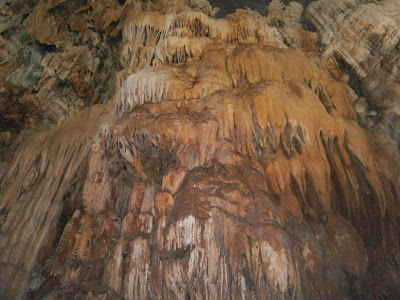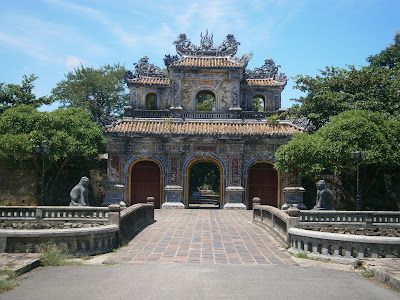For our second day in the evergreen jungle of Phong Nha, we went to visit the longest dry cave in the world, Paradise Cave. Situated 14 km outside of Son Trach, the cave can be reached by motorbike taxi, which we hired in the town centre. We enjoyed the bike ride on the wide, empty roads. Strangely, the National Park is strictly guarded by the Vietnamese military and access is limited. Apparently, some tourists can be turned back and refused entrance. The guards did seem unhappy to let us in, but finally approved, after talking with our drivers. It seems like an odd reaction, one would think foreign visitors, which are rare in this part of Vietnam, would be welcomed more openly as they bring income to the place.
Once we got to the entrance of the park, we decided to purchase the electric buggie ride to take us from the ticket office to the bottom of the 500 step staircase, consciously saving our energy.
Paradise Cave was quite impressive, built-up with a boardwalk to explore deep inside. We were allowed to go 1 km deep. Stalagmites and stalactites adorned the cave which is in fact 31 km long. Unfortunately, tour groups shouting and tour guides with their microphones did ruin the experience for us. We would have liked the other tourists to feel as serene as us and enjoy the deep silence experienced in such a huge cave. At least we had some moments of peace and took our time to explore slowly, letting groups pass in front and trying to soak up the experience as much as possible.
After the tour, we hopped back on our motorbikes and drove to Nuoc Mooc Eco trail for a nice trek in the Vietnamese heat! We walked along the turquoise river, through little bamboo bridges.
We heard there were some clear water streams to bathe in and found a nice spot to swim. Despite the voracious mosquitoes, we had a good time cooling off in the middle of the forest.



















































